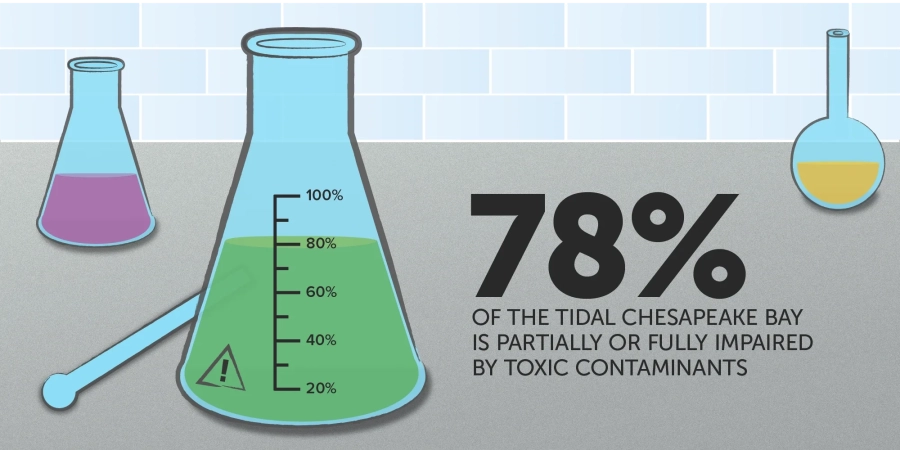Chemical Contaminants
Almost three-quarters of the Bay’s tidal waters are partially or fully impaired by pesticides, pharmaceuticals, metals and other chemicals, which can harm the health of both humans and wildlife.

Show image description
The infographic shows three glass containers commonly used in a scientific laboratory. At the front and center, an Erlenmeyer flask containing green liquid is marked with a caution symbol. The flask's markings indicate it is just over 80% full. Next to the flask, text states that 84% of the tidal Chesapeake Bay is partially or fully impaired by toxic contaminants.
